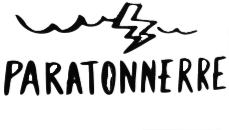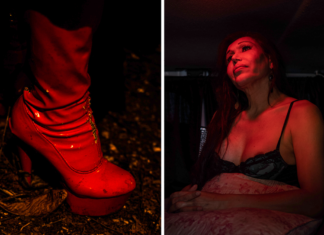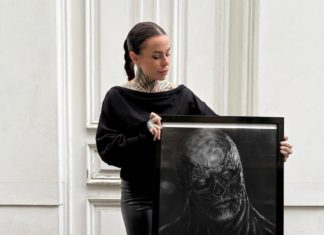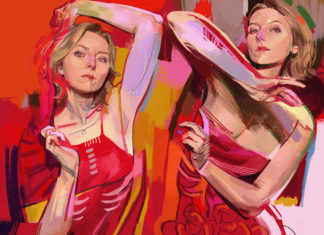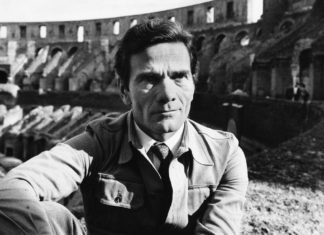Entre 1942 et 1968, Thomas Merton a vécu à l’Abbaye Notre Dame de Gethsemane, dans le strict et lointain monastère trappiste à une heure de route de Louisville (Kentucky). Au début de l’Automne 1968, il fut autorisé à voyager à l’étranger. En Inde, il a rencontra trois fois le Dalaï Lama et devinrent bons amis. Merton a même sympathisé avec plusieurs autres personnalités bouddhistes. A Bangkok (Thaïlande) le 10 décembre 1968, Merton est intervenu durant une conférence interreligieuse avec des moines de différentes religions. Après un cours qui fut bien reçu en fin de matinée, il retourna à son domicile. Epuisé par sa brillante intervention et touché par la chaleur suffocante, Merton tenta de se relaxer en prenant un bain ou une douche selon une biographie.
D’autres rumeurs reportées par la presse américaine ont donné naissance à une étrange histoire devenue depuis un véritable mythe urbain. Merton aurait été dans sa baignoire écoutant la radio lorsqu’il fit tomber malencontreusement le poste dans l’eau. Le malheureusement aurait ainsi été électrocuté. Tout d’abord, Merton n’était pas un adepte de la radio. Il ne possédait pas de poste et il n’y en avait pas non plus là où il résidait. La prise d’une douche ou d’un bain n’est pas non plus une certitude. Son corps fut retrouvé mouillé et nu (personne d’autre n’a été retrouvé dans la chambre). Une latte de plancher avait provoqué la chute d’un grand ventilateur qui tomba sur son corps mouillé. L’énorme appareil était resté branché et laissa une marque en forme de croix sur Merton. Il décéda environ une demie heure plus tard électrocuté. Son cadavre ne fut découvert qu’en fin de journée.
Cet étrange événement est traditionnellement décrit comme étant un accident ou un soi-disant accident. Personne n’a jamais pu prouver qu’il s’agissait d’un assassinat ou comme la presse américaine appelait un suicide par accident. On peut toujours constater que le mythe de la radio se diffuse toujours sur internet mais l’énigme de l’événement reste toujours non résolue.
L’écrivain gonzo Hunter S. Thompson intégrait souvent dans ses écrits des propos sur l’incompétence de certains journalistes et il était obsédé par la montée des assassinats politiques à la fin des années 60. Certains avaient prétendu que le gouvernement chinois était derrière cet « accident » car il craignait que Merton soit membre de la résistance tibétaine. Le Vatican aurait également pu le commanditaire par peur que Merton et le Dalaï Lama deviennent les artisans d’une nouvelle religion. Bien que l’épisode du « White Rabbit et la baignoire » dans le livre Fear and loathing in Las Vegas était imaginaire, l’avocat Oscar Zeta Acosta (représenté dans l’histoire comme un Samoan obèse) avait été choqué par la mort de Merton.
Thompson et Acosta sont arrivés à Las Vegas le 20 Mars 1969. Leur but était double : Reporter une course de motos Mint 500 dans le désert et finir un écrit intitulé « Strange Rumblings in Aztlan » pour le magazine Rolling Stone sur la discrimination policière envers les hispaniques. L’article de la course de moto Mint 500 ne comportait que 250 mots et une simple photo pour illustration. Thompson n’avait que faire de cet événement sportif et écrivit sur autre chose avec plus de 2 500 mots durant 48 heures sans dormir dans son hôtel. Sports Illustrated rejeta le travail mais cette satire écrite à la 1ère personne devint finalement la première partie du chef d’œuvre Fear and loathing in Las Vegas (Las Vegas parano).
Acosta, grand ami de Thompson, fut la source d’inspiration de « Strange rumblings in Aztlan ». Paru le 29 avril 1971, l’œuvre décrit Acosta comme un féroce avocat de rue combattant pour les droits des hispaniques. L’assassinat du journaliste chicano, assassiné par la police de Los Angeles est aussi raconté. Le mot Aztlan est un anagramme de Nazi Los Angeles.
Thompson et Acosta ont passé un bon moment mais n’ont pas beaucoup avancé sur l’écriture de « Strange Rumblings ». De retour à Los Angeles afin de travailler davantage, ils ont finalement occupé leur temps à boire et à se droguer ou encore à nager dans l’Océan Pacifique. Thompson décida alors de rentrer à Las Vegas avec Acosta. Le rédacteur en chef de Rolling Stone, David Felton, l’informa alors d’une conférence sur la drogue mais aucune personne ne promit d’accepter un article par peur que Thompson ne renvoie ensuite une incalculable note de frais comme il l’avait fait avec Sports Illustrated (lequel avait tout simplement décidé d’ignorer).
Dans le roman, Thompson et Acosta ne s’attardent pas longtemps à la conférence bidon, encore que leurs tapages ont pu inspirés la fiction. C’était le début des projets pour la prochaine « guerre contre la drogue », programme développé après une réunion entre le Président Richard Nixon et son directeur de cabinet John Erlichman. En 1994, Erlichman fit l’aveu au cours d’une interview que le programme « Guerre contre la drogue » avait pour but d’arrêter les activistes gauchistes et noirs en général. Cependant, les preuves ne furent révélées qu’en 2012 dans une série d’interviews de Dan Baum. Deux semaines après la publication de mon livre, cette information fut largement reportée dans un article du magazine Harpers le 19 avril 2016.
« A l’heure où j’écris un livre sur les politiques de lutte contre les drogues, j’ai commencé à poser à Ehrlichman une série de questions à la fois sérieuses et nazes. Rapidement, il les a mises de côté. « Vous voulez vraiment savoir quoi ? » Répondit-il avec la franchise d’un homme qui, après avoir connu une humiliation publique et un séjour en prison, n’avait plus rien à perdre. « La campagne électorale de Nixon en 1968 et son mandat présidentiel avait 2 ennemis : la gauche pacifiste et les noirs. Vous comprenez ce que je veux dire ? Il n’y avait rien d’illégal d’être contre la guerre ou noir. Par contre, il fallait associer les hippies à la marijuana et les noirs à l’héroïne et les criminaliser lourdement. Ainsi, ces deux communautés étaient marginalisées. Nous pouvions arrêter les leaders, fouiller leurs domiciles, interrompre leurs meetings et les calomnier nuit après nuit durant les news. Savions-nous que nous diffusions des mensonges ? Bien sûr que nous le savions.
Thompson assistait à cet événement absurde qui mêlait ignorance et violence. Le public était en partie plein de policiers. Les intervenants étaient soi-disant experts en chimie et drogues. La conférence a donné beaucoup d’inspiration pour la seconde partie du chef d’œuvre qu’est Fear and loathing in Las Vegas publié en novembre 1971. Mais le roman de Thompson est bien plus qu’une satire sur la guerre contre la guerre comme je l’explique dans mon livre.
Kevin T. McEneany
Auteur de « Fear, loathing and the birth of Gonzo »
https://rowman.com/ISBN/9781442266209/Hunter-S.-Thompson-Fear-Loathing-and-the-Birth-of-Gonzo
What’s Not in my Book
Thomas Merton spent from 1942 to 1968 at Abbey of Our Lady of Gethsemane, a reclusive and strict Trappist monastery about an hour’s drive from Louisville by car. In early fall of 1968 he was permitted to travel abroad. In India he met the current Dali Lama thrice and they became good friends. Merton also befriended several other prominent Buddhist spiritual leaders. In Bangkok, Thailand, on December 10, 1968, Merton attended an interfaith conference with monks from various religions. Late in the morning he gave a lecture that was well-received. He went back to the compound where he was staying. Exulted by his successful lecture and profusely sweating in tropical humidity, Merton decided to relax by taking a shower or bath, depending on what biography one reads.
Initial reports in the American press popularized a strange story that has since become an urban myth: that Merton was in the bathtub listening to the radio when he accidentally elbowed the radio, and the radio fell into the tub, thus electrocuting him. First of all, Merton was not a radio listener. He owned no radio and there was no radio in the place where he was staying. Whether he took a bath or shower is not particularly relevant. His body was wet and he walked nude (no one else was present in the house) to his bedroom. A trick plank floorboard he stepped on triggered the fall of a large metal electric fan onto his wet body, which pinned him to the floor. The electrical wires remained attached to the fan when it fell. The enormous fan burnt a cross mark onto Merton’s body. He died of electric shock over the course of about half an hour. His body was not discovered until evening.
This strange occurrence has been traditionally described as an accident or an “accident.” No one has ever unearthed any real information that it was an assassination; the theme in the American press was that it was suicide by accident. One can still find the radio myth traversing the internet, but the riddle of this event has never been solved.
Thompson frequently embedded his narratives with meta-narrative satires on incompetent reporting, and he was also obsessed by the epidemic of political assassinations in the late sixties. Some have speculated either the Chinese government was behind the “accident” because they feared that Merton might get involved in Tibetan resistance to China or that the Vatican feared Merton and the Dali Lama might create a new world religion. Since the near-suicide episode of the “White Rabbit” song in the novel was imaginary (although that song was Acosta’s favorite song), Acosta was understandably outraged by that incident, and later resentful at being portrayed in the novel as an overweight Samoan.
Thompson and Acosta arrived in Las Vegas on March 20, 1969. The purpose was twofold: to knock out a squib article on the Mint 500 desert motorcycle race and to finish a long piece entitled “Strange Rumblings in Aztlan” about police discrimination against Hispanics for Rolling Stone Magazine. The Mint 500 race piece for glossy Sports Illustrated was to be a banal 250 words to accompany a photo essay. Thompson became vehemently satiric about the idiotic event and spewed out 2,500 words over an insomniac 48 hours at the Mint Hotel. Sports Illustrated contemptuously spiked the piece. But this rambling draft of a satiric first-person camera-eye narrator became the origin of the first half of Fear and Loathing in Las Vegas.
Acosta arrived with Thompson because Acosta was Thompson’s chief friend and source for “Strange Rumblings in Aztlan.” The piece, published in April 29, 1971, depicted Acosta as a fierce street lawyer fighting for Hispanic rights; it covered the assassination of organizer Rueben Salazar by the LA cops. The word Aztlan is an abbreviated anagram for Nazi Los Angeles.
Thompson and Acosta had a good time, but didn’t make much progress on “Strange Rumblings.” Thompson and Acosta returned to Los Angeles to work further on the book, yet they mostly partied with booze and hallucinogens, swimming in the Pacific Ocean. Thompson decided to return to Las Vegas with Acosta when his editor at Rolling Stone, David Felton, tipped him off about the drug convention, yet neither Felton nor Jann Wenner promised to accept copy for fear of Thompson submitting an enormous expense bill, as he had done to Sports Illustrated (which the magazine ignored).
In the novel Thompson and Acosta don’t linger long at the ersatz convention, yet their raucous disruptive appearance provides amusing fiction. The plans for the coming “War on Drugs,” a program that developed from a brainstorming session between President Richard Nixon and his chief of staff John Erlichman. In 1994 Erilichman admitted in an interview that the “War on Drugs” was concocted to arrest leftist activists and African Americans in general, however this material did not appear until 2012 in an anthology of interviews by Dan Baum. Two weeks after my book went to press, this information was more widely disseminated in an April 19, 2016, article in Harpers magazine, the salient paragraph being:
At the time, I was writing a book about the politics of drug prohibition. I started to ask Ehrlichman a series of earnest, wonky questions that he impatiently waved away. “You want to know what this was really all about?” he asked with the bluntness of a man who, after public disgrace and a stretch in federal prison, had little left to protect. “The Nixon campaign in 1968, and the Nixon White House after that, had two enemies: the antiwar left and black people. You understand what I’m saying? We knew we couldn’t make it illegal to be either against the war or black, but by getting the public to associate the hippies with marijuana and blacks with heroin, and then criminalizing both heavily, we could disrupt those communities. We could arrest their leaders, raid their homes, break up their meetings, and vilify them night after night on the evening news. Did we know we were lying about the drugs? Of course we did.
Thompson was present at the ludicrous nuptial event that wedded ignorance to violence. The audience at the convention consisted of police officers; the speakers were amateur ideological “experts” in chemistry and drugs. This convention provided inspiration and anecdotal material for the second half of Thompson’s unusual satiric masterpiece, Fear and Loathing in Las Vegas, which was published November 1971. But Thompson’s novel was much more than a satire on the drug war, as I explain in my book.
Kevin T. McEneany
Author of ‘Fear, loathing and the birth of Gonzo’
https://rowman.com/ISBN/9781442266209/Hunter-S.-Thompson-Fear-Loathing-and-the-Birth-of-Gonzo
